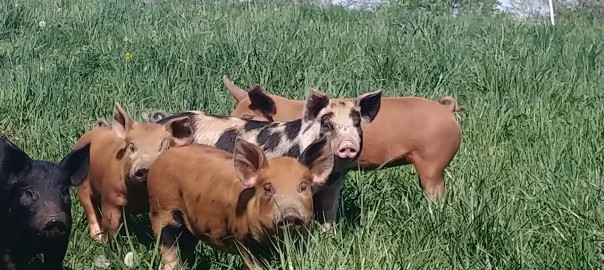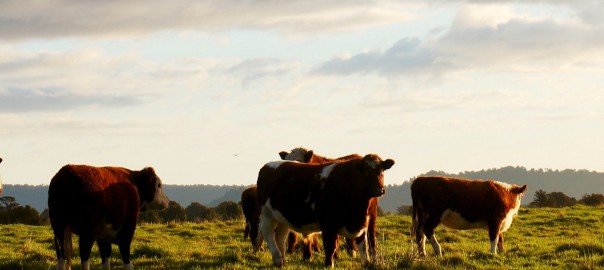6H2O + 6CO2 = C6H12O6 + 6O2
There it is. Photosynthesis. The miracle that makes life on earth possible.
For those of us who aren’t chemists, the above equation essentially reads:
Take six molecules of water plus six molecules of carbon dioxide, thrown them into the blender of plant physiology, and, somehow, you create one large molecule of sugar and six molecules of oxygen.
Just take a moment to let that sink in. The plant takes in water and CO2 and releases sugar and oxygen. This still blows my mind. The oxygen we are breathing right now, at some time in the not so distant past, was exhaled by grass or trees. When we breathe out CO2. They breathe IT in. The other byproduct of this chemical reaction is sugar. Which brings us to another miracle of life on earth: Grass.
Stomata are the tiny mouths on the leaf of plants. There are a whopping 300 of these “mouths” per square millimeter that take in CO2 during respiration. These “mouths” are like solar panels that start the magical process that turns carbon dioxide into sugar.
What happens is a change in energy from one form to another. Solar energy is transformed into calories. That alone is incredible. For most people who have studied photosynthesis in high school biology, this is the end of the story. In reality, it is just part of the story. The miracle of photosynthesis only gets more incredible, the more you dig in.
Some of these sugars created in this process run all the way through the plant from top to bottom. Many of these sugars are released from the roots. This sugary substance is injected underground by the plant’s roots; as part of the process, there is no waste.
A symbiotic relationship exists between the grass roots, the beneficial bacteria in the soil, and mycorrhizal fungi. The plant roots feed the fungi these sugars — in the form of liquid carbon — and in turn, the fungi send out tubes, called hyphae, that shoot enzymes into rock to break it down and extract essential minerals and nutrients, which are delivered back to the plant roots.
Mycorrhizal fungi serve as the conduit for nutrients in exchange for sugar. The hyphae help plants access nutrients which are outside of their normal range or grasp. They also create an incredible root-like network that holds the soil and help prevents erosion. When bacteria and fungi complete their life cycle, they decompose and become organic matter.
In some places, 40% of all organic matter in the soil is composed of decomposing mycorrhizal fungi.
So, why is that good news?
First, the process sucks carbon out of the atmosphere (where we don’t want it) and puts it back in the ground (where we do want it) as organic matter. Every farmer wants organic matter in their soil, it is what creates topsoil. This process is called carbon sequestration, and it is the most exciting win/win scenario we can imagine.
This organic matter is a key to regenerative farming. It will allow for MORE grass to grow, which means MORE cows and pigs can graze, which means more delicious meat, more farmers, and more carbon leaving the atmosphere and entering the soil where it belongs.
Photosynthesis is a great example of something so common, that we generally don’t think about it very deeply. But it is truly an original example of simplicity and elegance that fuels our world.






